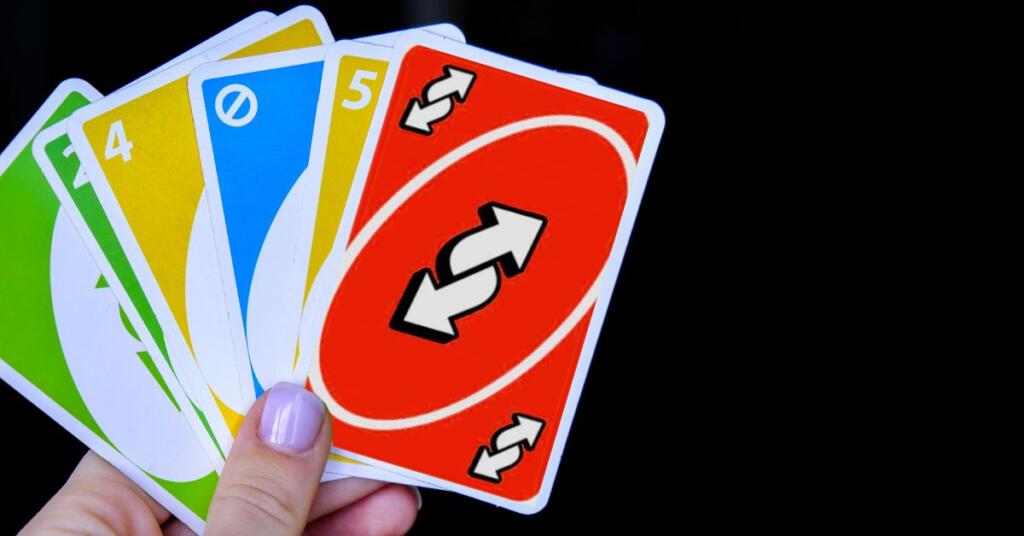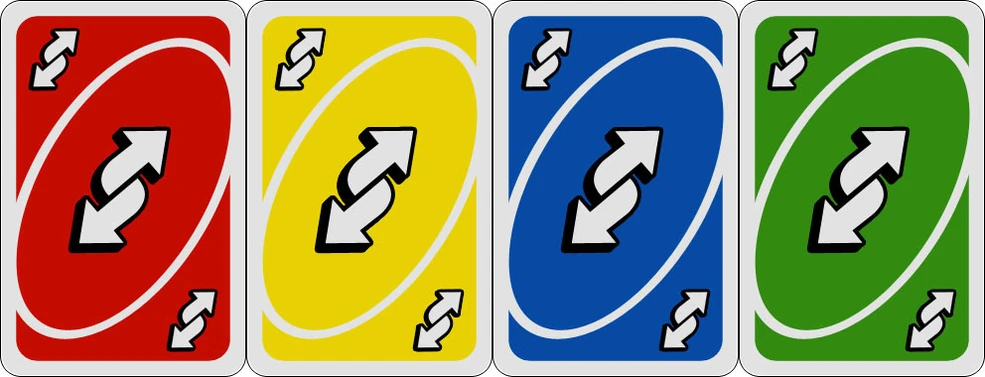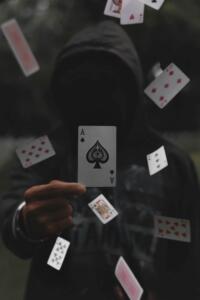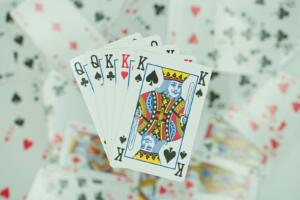The status of the UNO reverse card goes beyond this entertaining card game. This simple white arrow on a blue, red, yellow, or green background has become a widely recognized symbol in popular culture and achieved a level of fame even in the world of memes. But why does this card stand out so much? Let’s take a closer look at its history and strategic allure.
Understanding the Uno reverse card
The UNO reverse card is one of the most iconic and versatile special action cards in the game. Its primary function is to change the direction in which players take their turns during multiplayer gameplay. This shift in direction can dramatically alter the flow of the game, adding an element of strategy and unpredictability. If the game is being played with more than two players, the Reverse card flips the turn order, making the player who was previously going last take the next turn, and vice versa. This ability to change the turn sequence can create opportunities for players to disrupt their opponents’ strategies, making the game even more dynamic and exciting.
However, if there are only two players in the game, the UNO Reverse card takes on a slightly different role. In this case, it functions similarly to a “skip” card, which means that the player who plays the UNO Reverse card gets to take another turn immediately after. This alteration in gameplay offers a strategic advantage, allowing the player to gain extra time to play more cards or further manipulate the game’s flow to their benefit.
It’s important to note that the rules surrounding the Reverse card may vary slightly depending on the specific version of UNO being played. For instance, in special editions like UNO Flip or UNO Attack, the UNO Reverse card might have additional features or alternative uses that slightly change its function. In UNO Flip, for example, the Reverse card can flip the entire deck to a new side with different card types, further adding complexity to the game. Similarly, in UNO Attack, the Reverse card may trigger different actions due to the unique mechanics of the game, such as causing the card launcher to activate in certain scenarios.
Because of these variations, it’s crucial to assess which version of UNO you are playing before diving into the game. Understanding how the Reverse card works within the specific rules of your edition will ensure that you fully grasp its strategic potential and can leverage it to your advantage. Whether you’re switching turn directions in a multiplayer game or taking an extra turn in a two-player match, the Reverse card remains an essential tool for players looking to outwit their opponents and stay in control of the game.

History and origin of the reverse card
The UNO reverse card was part of the original action cards included in UNO, which was invented by Merle Robbins in 1971, along with “Skip” and “Draw Two” cards. These cards aimed to make the game more engaging by adding a surprising element that required gameplay strategy.
More recent variations of the game include different versions of the reverse card. For example, UNO Flip features a “Flip” card that changes the direction of play and flips all cards to their opposite side, revealing different actions and colors.
Rules and strategies
There is nothing too complicated about the reverse card: when played, it changes the direction of play. In a two-player game, playing the reverse card equals skipping the opponent’s turn and playing another hand. However, there are some key strategies to keep in mind when playing the reverse card to maximize its potential:
- Save the reverse card until a crucial moment in the game.
- Use a reverse card as a defensive move to disrupt the next player’s strategy.
- Take advantage of a reverse card to give yourself another turn.
Mastering the basics
To exploit the full potential of this seemingly simple card, players should focus on some key aspects of the game and read into the opponents’ possible moves. Consider the following factors when playing a reverse card for maximum impact:
- Pay attention to the current direction of play.
- Count how many cards your opponents have left in their hand.
- Try to assess how many reverse cards have been played already.
Advanced techniques and exceptions
With just a few rounds of UNO, you’ll begin to understand the rhythm of the game, refine your strategies, and develop a deeper appreciation for the tactical nuances involved. The Reverse card plays a key role in advanced gameplay, offering clever ways to disrupt the flow of the game and throw off your opponents’ carefully laid plans. Its ability to change the direction of play can be used to great effect, particularly when combined with other special action cards like Skip or Draw Two. Using these cards in synergy can create a chaotic environment where your opponents struggle to regain control, while you maneuver your way to victory.
In a two-player game, the UNO Reverse card has an even greater impact. When used strategically, it functions as a “skip” card, enabling the player who uses it to regain their turn. This allows you to play more cards, potentially clearing your hand faster and putting pressure on your opponent. The additional turn also opens up opportunities to manipulate the game in your favor, whether it’s by holding onto key cards or avoiding the need to draw from the deck.
UNO also has a rich history of house rules—alternative rules developed by players over the years that modify the original gameplay. These house rules often add extra excitement, depth, and unpredictability to the game. One popular variation, for instance, is stacking Reverse cards, a rule not included in the official version but embraced by many players worldwide. In this variation, if a Reverse card is played, other players may also play their own Reverse cards, causing the direction of play to switch multiple times in rapid succession. This creates a fast-paced, often chaotic environment, where the direction of play may change several times in a single round, depending on the number of players who choose to stack their UNO Reverse cards.
While this rule certainly makes the game more unpredictable, it can also work to the advantage of the player who initiated the stacking, as it gives them more control over the direction of play. However, it can also backfire if other players use the stacking strategy to turn the tide against you, creating a dynamic environment full of tension and surprise. Regardless of how you play, incorporating house rules like stacking Reverse cards can make UNO even more enjoyable and unpredictable.
By experimenting with these variations and developing your own strategies, you can deepen your understanding of the game and create new and exciting ways to challenge your friends or family. Whether you’re playing by the standard rules or with your own house rules, the UNO Reverse card remains an essential and powerful tool in your UNO arsenal, capable of creating chaos, controlling the game’s pace, and giving you a significant edge over your opponents.

The UNO reverse card meme
During the Sidemen charity match, YouTuber Max Fosh made headlines by pulling out an UNO reverse card after receiving a yellow card from referee Mark Clattenburg. The stunt, which took place in the 77th minute after Fosh fouled Miniminter, went viral and was meticulously planned. Fosh explained on TikTok that he had prepared both regular and oversized UNO cards, waiting for the perfect moment to execute his plan. This unexpected move delighted fans and added a humorous twist to the event, cementing Fosh’s moment as a viral sensation. These revisions ensure the information is accurate and comprehensive, providing a clear and engaging overview of the UNO reverse card and its cultural impact.




